The Ultimate Guide To Growing Vegetables In Raised Beds
The Ultimate Guide to Growing Vegetables in Raised Beds
Introduction
Growing vegetables in raised beds is a great way to improve your gardening productivity and success. Raised beds offer a number of advantages over traditional gardening methods, including:
- Improved drainage and aeration
- Reduced soil compaction
- Easier access for gardening, especially for people with limited mobility
- Increased soil temperature, which allows you to start planting earlier in the spring and harvest later in the fall
- Improved water retention
- Greater diversity of plants that can be grown
If you're thinking about starting a vegetable garden, raised beds are a great option. In this guide, we will walk you through everything you need to know to get started, from choosing the right location and materials to planting and harvesting your crops.
Main Content
1. Choosing the Right Location
The first step in starting a raised bed garden is choosing the right location. The ideal location will have:
- Full sun (6-8 hours of sunlight per day)
- Well-drained soil
- Level ground
If you don't have a spot in your yard that meets all of these criteria, don't worry. You can still create a successful raised bed garden in a spot with partial sun or slightly compacted soil. Just be sure to amend the soil with compost or other organic matter to improve drainage and aeration.
2. Building the Raised Beds
Once you've chosen a location, it's time to build the raised beds. There are many different ways to build raised beds, but the most common method is to use wood. You can purchase pre-made raised bed kits or build your own. If you're building your own, be sure to use pressure-treated wood to prevent rot.
The size of your raised beds will depend on the amount of space you have available and the number of vegetables you plan to grow. A good rule of thumb is to make each bed at least 4 feet wide and 6 feet long. This will give you enough space to plant a variety of vegetables without overcrowding them.
3. Filling the Raised Beds
Once you've built the raised beds, it's time to fill them with soil. The best soil for raised beds is a mix of compost, topsoil, and sand. This will help to improve drainage and aeration, which is essential for growing healthy vegetables.
You can purchase pre-made soil mixes for raised beds, or you can make your own. If you're making your own, be sure to use a mix that is high in organic matter. Organic matter helps to improve the water-holding capacity of the soil, which is important for keeping your vegetables healthy during hot, dry weather.
4. Planting the Vegetables
Once the raised beds are filled with soil, it's time to start planting your vegetables. Be sure to choose vegetables that are compatible with each other and that will thrive in your climate. You can find a list of compatible vegetables in most gardening books or online resources.
When planting your vegetables, be sure to follow the spacing recommendations on the seed packet. This will help to ensure that your vegetables have enough room to grow and mature properly.
5. Caring for the Raised Bed Garden
Once your vegetables are planted, it's important to care for them properly. This includes watering, fertilizing, and weeding.
Water your raised bed garden regularly, especially during hot, dry weather. You should water deeply so that the water reaches the roots of the plants.
Fertilize your raised bed garden every few weeks with a balanced fertilizer. This will help to keep your vegetables healthy and productive.
Weed your raised bed garden regularly to prevent weeds from competing with your vegetables for water and nutrients.
6. Harvesting the Vegetables
When your vegetables are ready to harvest, be sure to do so promptly. This will help to prevent them from becoming overripe or damaged.
Harvesting vegetables is a great way to enjoy the fruits (or vegetables) of your labor. It's also a great way to save money on groceries.
Conclusion
Growing vegetables in raised beds is a great way to improve your gardening productivity and success. Raised beds offer a number of advantages over traditional gardening methods, and they are relatively easy to build and maintain.
If you're thinking about starting a vegetable garden, raised beds are a great option. With a little planning and effort, you can have a thriving raised bed garden in no time.
Are you looking for the best vegetables to grow together in raised beds? If so, you've come to the right place! In this paragraph, I'll share some of my favorite combinations, as well as a few tips for planning your garden.
First, let's talk about companion planting. Companion planting is the practice of planting certain types of vegetables together because they benefit each other in some way. For example, tomatoes and basil are often planted together because basil helps to repel tomato hornworms.
Here are a few of my favorite companion planting combinations for raised beds:
- Tomatoes + basil: This classic combination is a must-have for any raised bed garden. Basil helps to repel tomato hornworms, while tomatoes provide support for basil plants to climb.
- Carrots + radishes: These two root vegetables grow well together because they have different root depths. Carrots need deep, loose soil, while radishes can grow in shallower soil.
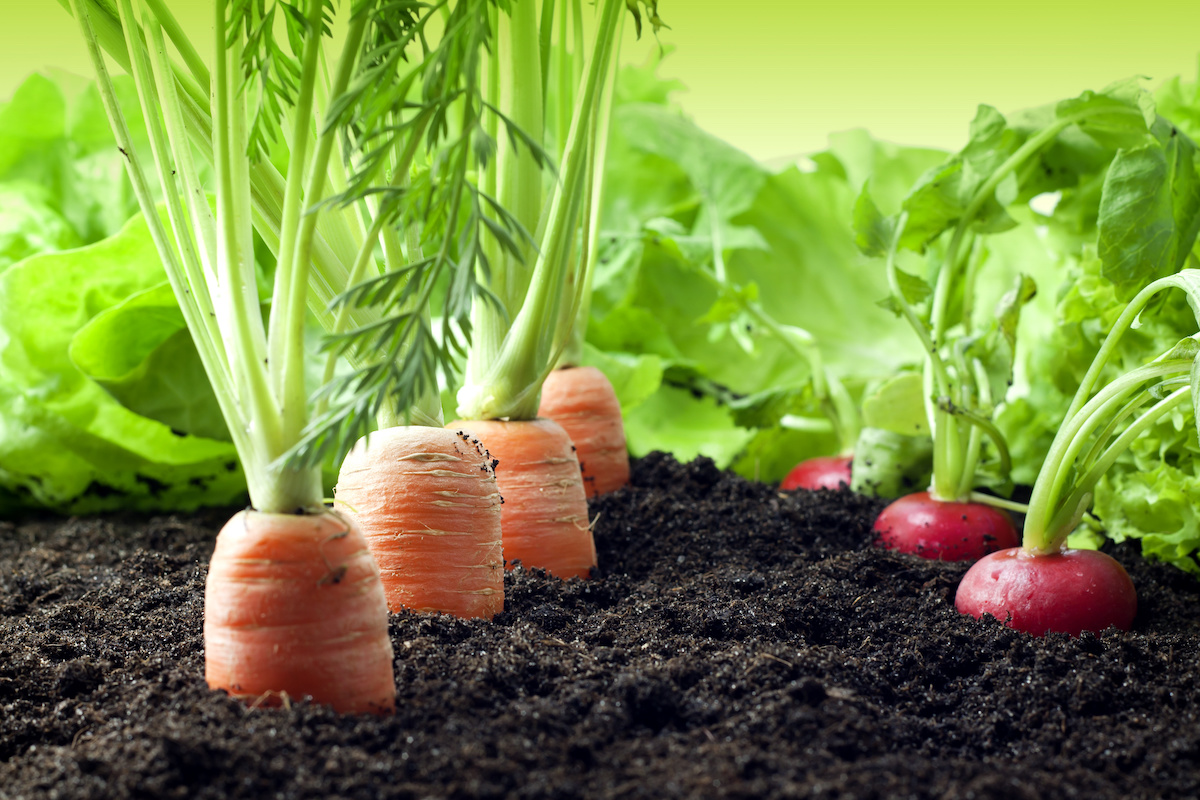
- Lettuce + chives: Lettuce and chives are both members of the Allium family, which means they have similar growing requirements. Chives also help to repel aphids and other pests that can damage lettuce plants.
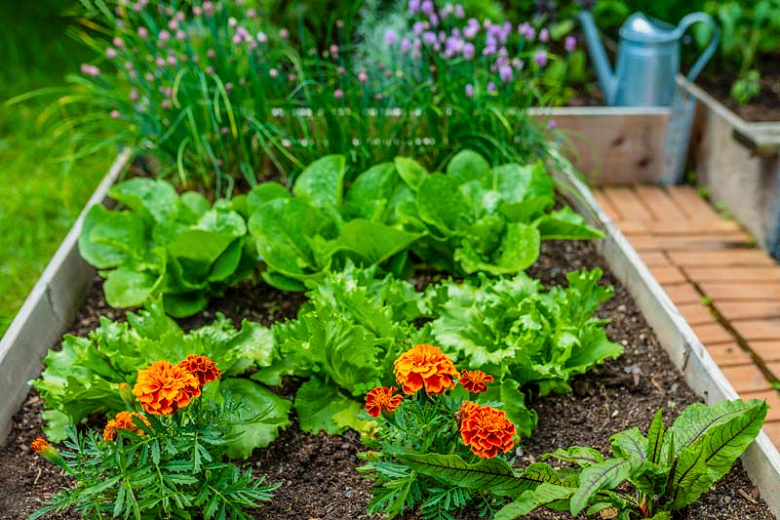
- Squash + corn + beans: This combination is known as the "Three Sisters" and has been used by Native Americans for centuries. The squash provides ground cover to help suppress weeds, the corn provides support for the beans to climb, and the beans fix nitrogen in the soil, which benefits all three plants.
Now that you know a little bit about companion planting, let's talk about planning your garden. When planning your raised bed garden, it's important to consider the following factors:
- The size of your bed: How much space do you have to work with?
- The climate in your area: What types of vegetables will grow well in your climate?
- The amount of sunlight your bed receives: How much sun does your bed get each day?
Once you've considered these factors, you can start to plan your garden layout. Be sure to group compatible plants together and leave enough space between plants for them to grow.
For more information about the best vegetables to grow together in raised beds, please visit Gardenia Inspiration. This website has a wealth of information on companion planting, as well as tips for planning and maintaining your raised bed garden.
FAQ of best vegetables to grow together in raised beds
Q1: What are some good vegetable combinations to grow in raised beds?
A1: There are many great vegetable combinations that can be grown in raised beds. Some popular options include:
- Carrots and tomatoes: These two vegetables have different nutrient requirements, so they won't compete for the same nutrients in the soil. Carrots also help to suppress weeds, which can be a problem in raised beds.

- Beans and corn: This is a classic combination that is known as the "three sisters". The beans fix nitrogen in the soil, which benefits the corn. The corn provides a trellis for the beans to climb, and the squash shades the soil, which helps to keep it moist.
- Lettuce and spinach: These two leafy greens are relatively low-maintenance and can be harvested multiple times. They also benefit from the same growing conditions, so they can be planted together in the same bed.

- Herbs and vegetables: Herbs can help to deter pests and attract beneficial insects, which can benefit the vegetables in your raised bed. Some good herb-vegetable combinations include:
- Basil and tomatoes
- Oregano and peppers
- Chives and onions
Q2: What vegetables should not be planted together?
A2: There are a few vegetables that should not be planted together, as they can compete for the same nutrients or space. These include:
- Tomatoes and potatoes: These two plants are susceptible to the same diseases, so it is best to avoid planting them together.

- Cucumbers and melons: These plants can spread a disease called powdery mildew, so it is best to plant them in separate beds.
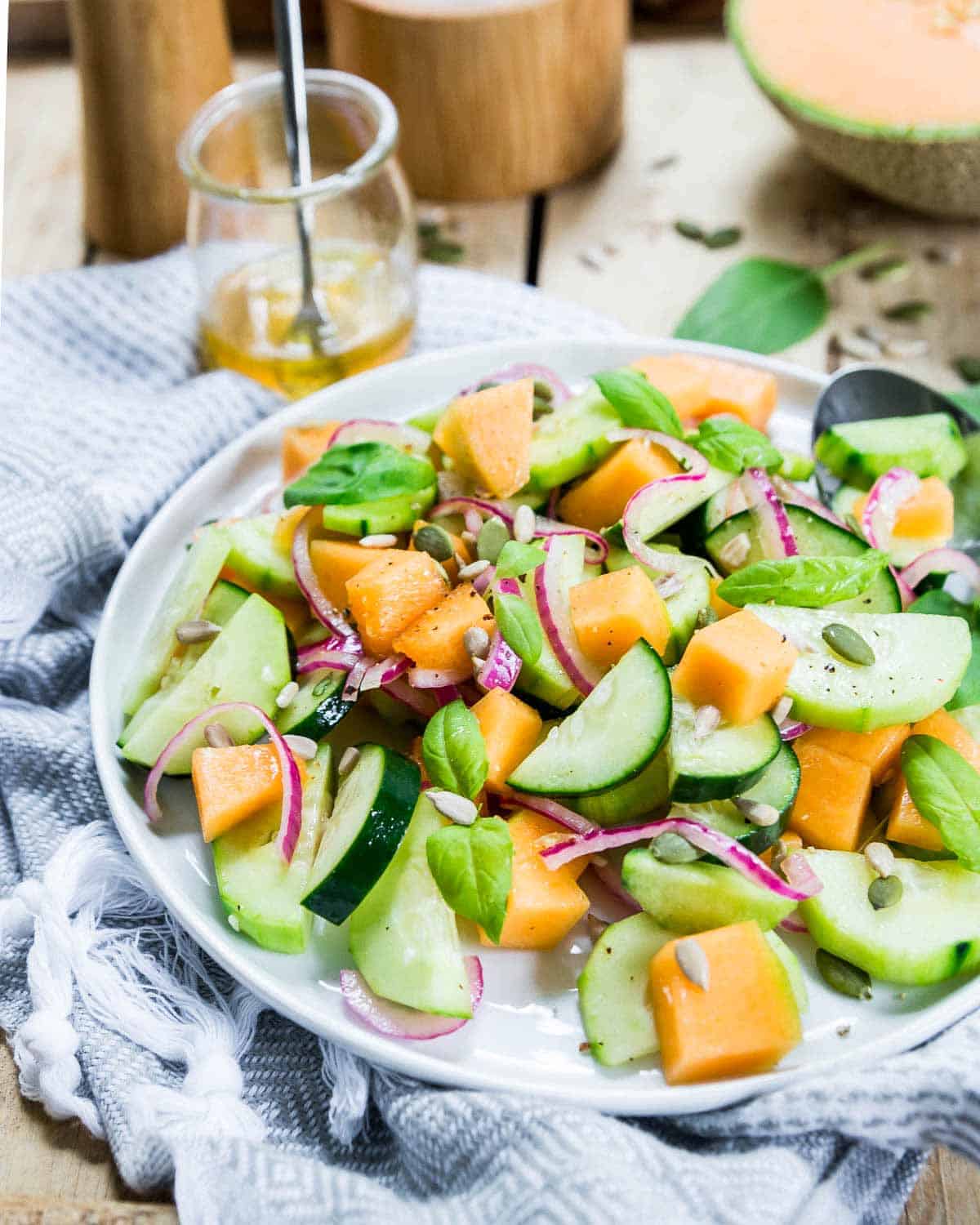
- Carrots and onions: These two vegetables can have a negative effect on each other's growth.

Q3: How do I decide which vegetables to plant together?
A3: When deciding which vegetables to plant together, there are a few factors to consider, including:
- The plants' nutrient requirements: Some plants are heavy feeders, while others are more light feeders. It is important to plant plants with similar nutrient requirements together, so that they do not compete for the same nutrients in the soil.
- The plants' growth habits: Some plants are tall and need plenty of space, while others are short and bushy. It is important to plant plants with similar growth habits together, so that they do not outgrow each other.
- The plants' susceptibility to pests and diseases: Some plants are more susceptible to pests and diseases than others. It is important to plant plants with similar pest and disease resistance together, so that they can help to protect each other.
Q4: How far apart should I plant vegetables in raised beds?
A4: The distance between plants will vary depending on the type of vegetable and the size of the raised bed. However, as a general rule of thumb, you should plant vegetables at least 12 inches apart. This will give them enough space to grow and develop properly.
Q5: How do I fertilize raised beds?
A5: Raised beds need to be fertilized regularly to maintain their fertility. You can fertilize your raised beds with a balanced fertilizer, such as a 10-10-10 fertilizer. Apply the fertilizer according to the manufacturer's directions.
Image of best vegetables to grow together in raised beds
- Carrots and tomatoes: Carrots and tomatoes are a classic companion planting combination. Tomatoes provide shade for the carrots, which helps to prevent the carrots from bolting. Carrots also help to improve the drainage of the soil, which is beneficial for tomatoes.
- Lettuce and spinach: Lettuce and spinach are both cool-season vegetables that can be grown together in raised beds. They have similar growing requirements, and they help to suppress weeds.
- Beans and corn: Beans and corn are a popular companion planting combination known as the "Three Sisters." The corn provides a support for the beans to climb, the beans fix nitrogen in the soil, and the squash helps to suppress weeds.
- Peas and radishes: Peas and radishes are a quick-growing companion planting combination. Peas can be planted early in the season, and radishes can be harvested in a few weeks. They both help to improve the nitrogen content of the soil.
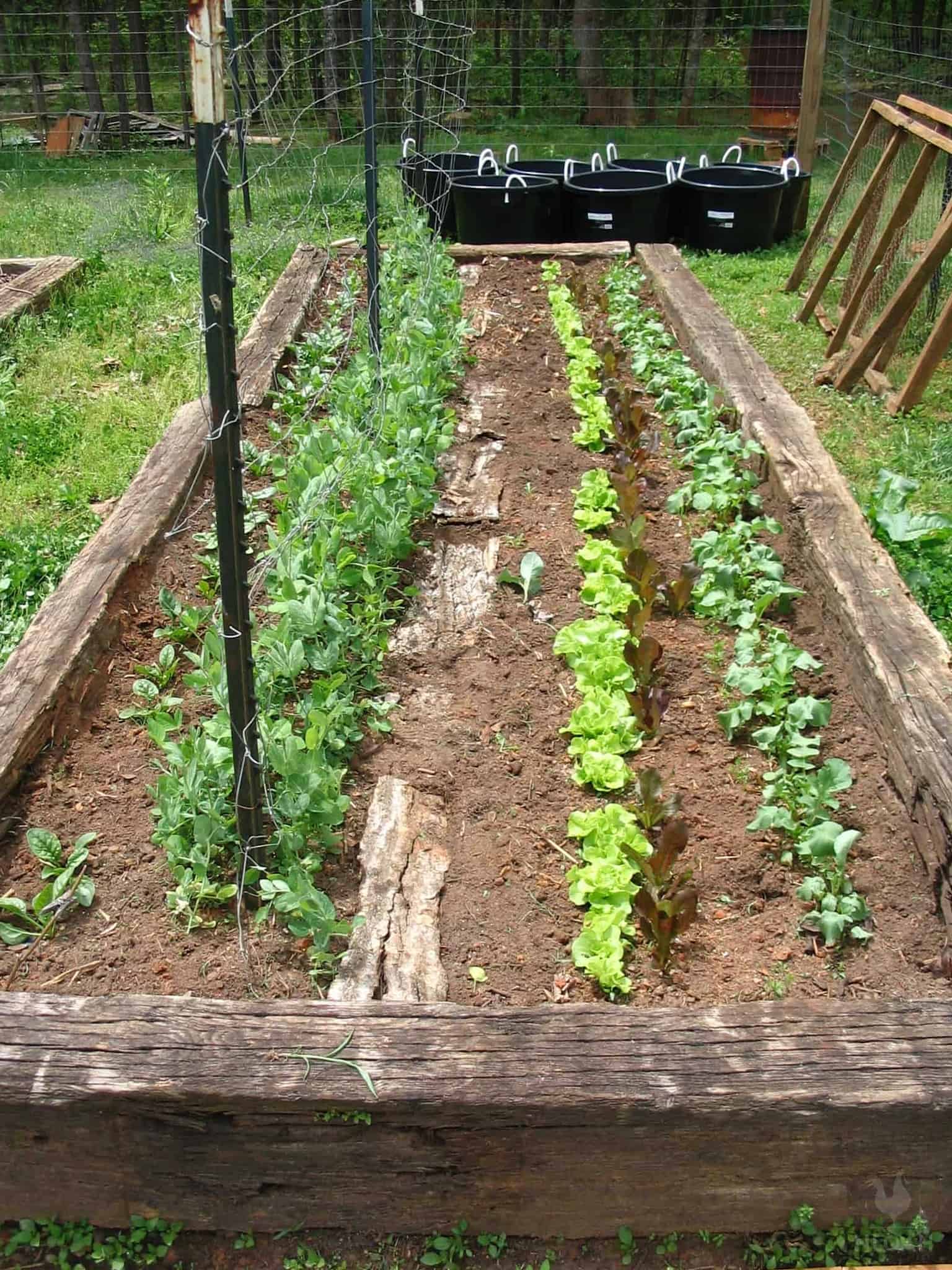
- Herbs and flowers: Herbs and flowers can be grown together in raised beds to add beauty and fragrance to your garden. Some popular herb and flower combinations include basil and tomatoes, lavender and roses, and mint and marigolds.
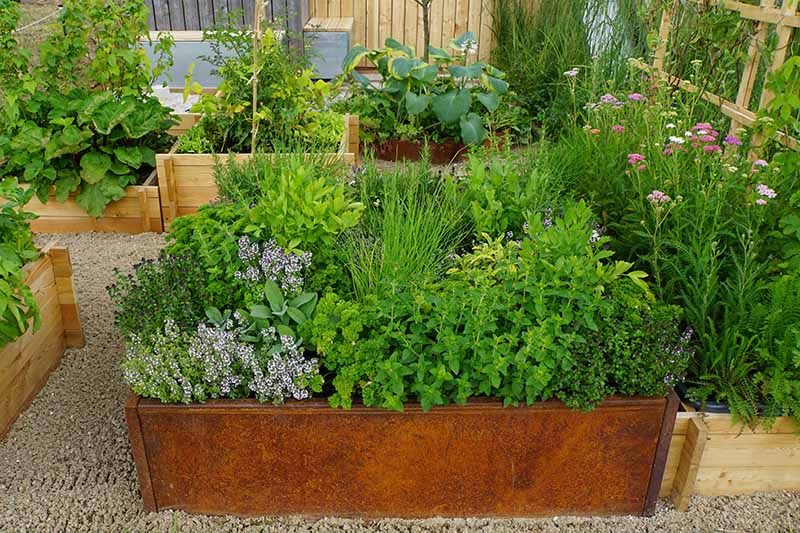
Post a Comment for "The Ultimate Guide To Growing Vegetables In Raised Beds"